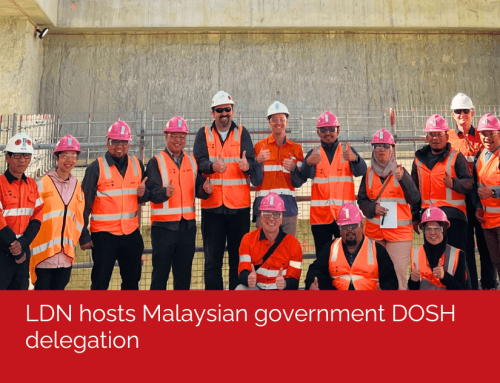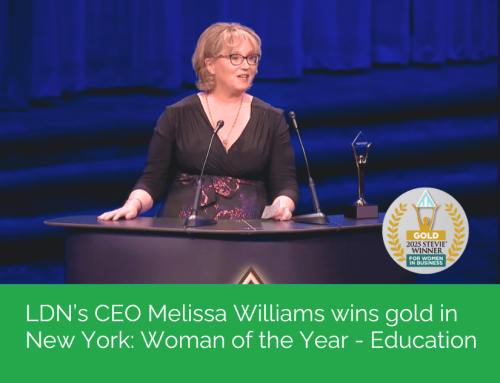Selecting the right training partner sets the tone for how seriously your organisation values investing in safety and leadership skills. It shapes how your people think, act, and look out for one another. Whether you need frontline training, leadership development, or compliance programs, the right provider makes a measurable difference..
Click below to explore our five key tips to choosing a corporate training provider:
Before booking a training program, start by identifying the specific risks and compliance requirements in your workplace.
Industry-specific risks: A construction site faces different risks than an office envioronment. Does your provider understand and offer training tailored to your industry?
Legal compliance: Your training must meet current legislation, regulations, and industry standards, not just in work health and safety, but across all areas relevant to your operations. Depending on your industry, this could include environmental regulations, licensing requirements, industrial relations laws, or mandatory codes of practice.
Tip: Do your due diligence and choose a provider who consults with you on your requirements, understands your organisation, and customises training to match your organisations needs rather than offering generic, one-size-fits-all content.
Not all safety training providers understand the real challenges of leadership development or workplace safety. Consider if you provider has:
- Experience in your sector: Choose a training provider that has already worked in your sector – those with deep construction, transport, manufacturing, utilities or government experience will bring relevant case studies and industry insights.
- Recognised credentials: Does the provider have industry accreditations and a track record of delivering nationally recognised training?
- An ability to train across multiple locations: Make sure your provider can deliver programs everywhere that you operate – be it Australia, New Zealand or globally so you can provide consistent training and messaging.
- An understanding of how people learn: Ensure the instructional designers and facilitators involved in the program design and training delivery understand the science of learning and what it takes to ensure all learning styles and preferences are catered for.
- Value adds: Can they go beyond delivery to support your broader leadership and safety goals – for example, by offering nationally recognised qualifications, running safety culture surveys, executive masterclasses, or leadership diagnostics that strengthen program impact?
Tip: Ask for case studies or testimonials from similar organisations to see how their training has made an impact.
A great training providers program will go beyond compliance and shift your safety and leadership culture, not just deliver information. Check that your provider can offer:
Engaging, practical training: Facilitators should connect with participants, create psychologically safe spaces to learn and engage, and use real workplace examples to bring theory to life and make it stick.
Flexible delivery options: Can you choose from face-to-face, online, or blended learning to suit different teams and operational needs?
Customised training content: Is their training tailored to your organisation’s safety culture, challenges, and procedures?
Training grounded in the science of learning: The most effective programs are built on proven learning design principles that cater to different learning styles and ensure the learning and the concepts are retained and applied back on the job.
Value adds: Could they offer nationally recognised qualifications as part of your program?
Tip: Choose a partner who understands your culture and designs programs that shift habits, mindsets, and results through evidence-based learning.
Effective safety training doesn’t stop once the course is completed. The best providers offer:
Post-training follow-ups: Does the provider reinforce learning after the training session? Do they offer coaching or refresher options?
Workplace application: Are leaders and teams given tools to implement what they’ve learned?
Evaluation and improvement: Can the provider track results of the training and adapt the content and delivery based on participant feedback?
Tip: Ask about what custom follow-up programs they offer to ensure lasting behaviour change is embedded rather than a one-off training session.
A good provider makes it easy to plan, deliver, and manage your training. Ask if your provider can offer:
Dedicated project management: They offer you single point of contact who’s proactive, responsive, and able to adapt when plans change.
Seamless logistics: Can they coordinate venues, logistics, schedules, and participant communication so you can focus on outcomes, not endless admin.
Training materials: Quality participant guides, assessments, and digital resources professionally branded for your organisation.
Tip: The right training partner makes complex rollouts feel effortless and removes friction, not adds to it. If working with them feels effortless, that’s usually a sign the partnership will run smoothly when the pressure is on.
Following these tips will ensure you’re not only making a procurement decision but a strategic investment in your people, performance, and workplace culture.
 Ready to move beyond box-ticking training?
Ready to move beyond box-ticking training?
At LDN, we partner with organisations across Australia, New Zealand and globally to design training that delivers measurable impact.






